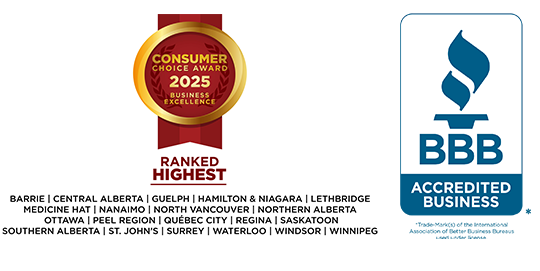You have probably heard, more than once by now, that not all debt is created equal. Some types of debt can actually be beneficial, where others can put your personal and family well-being at risk. As consumers, understanding the difference can have a profound effect on your credit score, your buying, and borrowing habits, and your financial security.
Many people believe all debt is bad. However, some debt is viewed more favorably as a sign of low-risk, responsible borrowing. Here are a few things to consider when exploring what kind of debt makes sense to acquire.
Good Debt
In general, financial institutions and lenders consider “good debt” as a tool which will improve your financial situation either now, or in the future. Below are some everyday examples of good debt.
Buying a house
A home or mortgage loan is considered good debt. That is because homes, and real estate in general, largely appreciate over time. The theory is simple. A mortgage loan with reasonable interest rates allows the money you pay on the debt to contribute to equity build-up. Buying a home and entering into a mortgage agreement that is within your budget can be beneficial in another way: although you will have mortgage payments each month, you may be saving on paying rent.
Home improvement loans
Depending on the project, some home improvement loans are also viewed as good debts as they tend to add value to the house as an asset. However, care should be taken not to make yourself “house poor” by committing too much of your monthly income to paying mortgages and home improvement loans at the same time.
Building discipline and credit
Taking on manageable debt is a commonly used strategy for developing discipline with credit. Also, you need to use credit to build a credit history for the larger ticket items or milestones you may want to finance down the road. Taking on small amounts of debt and paying it off responsibly enables individuals to establish positive credit today for when they need it most tomorrow.
Educational
Another type of debt that can be considered 'good' are educational loans. Student loans are investments in education that may help you increase your future income based on increased knowledge or skill. These types of debt can bring an increased return for borrowers as you become a more financially healthy consumer, hopefully for life.
Free up emergency funds
While taking on debt does mean paying interest, securing long-term financing at a low rate with a manageable payment plan can free up funds to financially manage other areas of your life. For example, buying a house with cash might eat up all your savings, leaving you no contingency funds for repairs or other emergencies. Borrowing to refinance high interest debt in exchange for a lower, consolidated rate with more manageable payments can also free up money.
Growing your business
If you are a business owner and have a business idea that would enable you to expand your income, financing those growth initiatives could be a viable option that actually mitigates the risk of lost opportunity as a result of not having access to funds.
The underlying theme for all of these is that the debt is designed to fund your long-term net worth and financial well-being. If your goal for borrowing money is for a different purpose or goes in a different direction, it would fall into the ‘bad debt’ category and should be heavily considered against other viable options.
Bad Debt
Bad debts can be defined as debt that does not increase in value or grow your net-worth. Immediate examples of common bad debt include:
Credit Cards
These are among the worst offenders. Not only are these debts often used for consumables that don’t generate income (eating out, gas, entertainment, vacations), they have shockingly high-interest rates making these items cost far more over time.
Payday loans
The very definition of predatory lending, payday loans represent a huge financial loss for many Canadians today. You are essentially leveraging your future income at an insurmountable interest rate in order to gain cash in hand today.
Vehicles
New or used, the average vehicle depreciates the moment you purchase it. Further, the depreciation rate is significant. Paying interest on purchases that fall in value at such alarming rates is considered throwing good money after bad. That said, vehicles are often a necessity, and many people cannot purchase a vehicle without financing. Carefully consider the amount you are able to spend on a vehicle, your ability to make a down payment and the specific terms of the financing. Don’t just consider the monthly or bi-weekly payment, but instead look at the interest rate; how long you will be paying relative to the expected life of the vehicle; and the total amount you will end up paying for the vehicle including all of the interest and fees. It is also common to see loan balances left on old vehicles rolled over into new vehicle loans – this almost always means the borrower is fighting an uphill battle with debt, and making monthly payments that are significantly higher than the value of their current vehicle.
Debts like these, and with similar traits do not lift individuals, or their families out of debt and may in fact put them in financial crisis in the future.
Conclusion
Debt is an often necessary aspect of life. And there are many scenarios where choosing to borrow money makes good sense. The key is in being able to identify if debt is going to contribute to your long-term financial well-being, and that the payment plan is both manageable, and sustainable.



